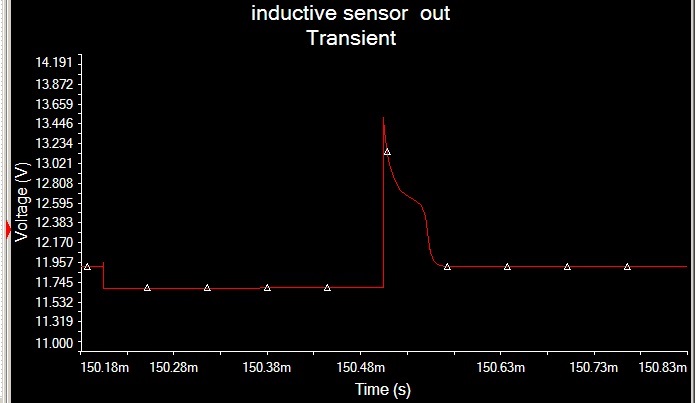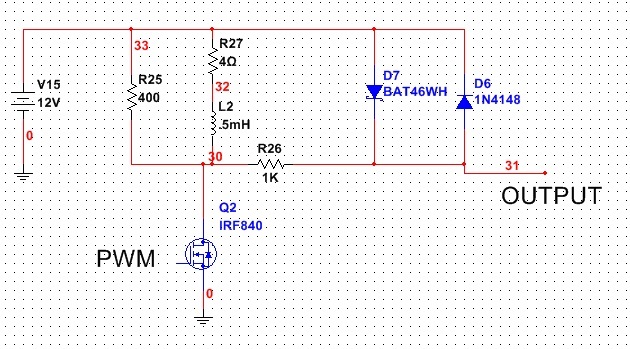Hi
I HAVE A QUESTION ABOUT, VERY WEAK SIGNAL AMPLIFICATION.THIS SIGNAL RIDS ON A 12V DC OFFSET.
THIS SIGNAL COME FROM INDUCTIVE SENSOR.LEAST CHANGE IN SENSOR ENVIRONMENTS MAKE 20 MICRO VOLTS ON OUTPUT SENSOR.SENSOR OUTPUT SIGNAL CHANGE ALONG X AXIS AND EXPONENTIALLY CHANGED IN DIFFERENT CONSTANT TIME AND ALONG Y AXIS NOT CHANGE.
I WANT DIGITIZE THIS SIGNAL WITH 0V TO 5V ADC INPUT RANGE WITHOUT USE CAPACITOR FOR FILTER AND REMOVE DC OFFSET.
I PUT TWO PICTURE FROM SIMULATOR
AND OTHER
THESE PICTURES SHOW OUTPUT SENSOR CHANGES .
EVERYONE CAN HELP ME FOR AMPLIFY AND CONDITIONING THIS SIGNAL??
THANKS
SINCERELY.




